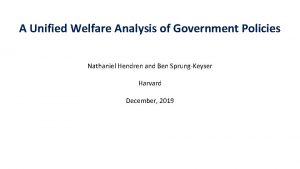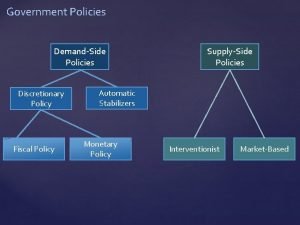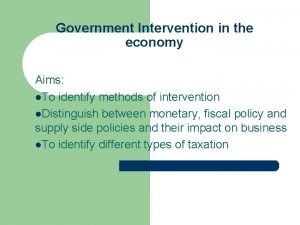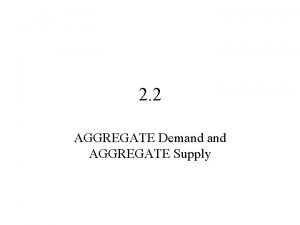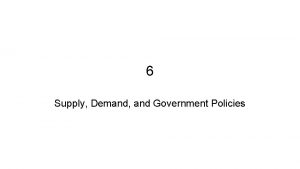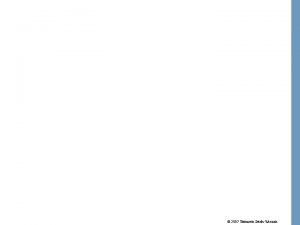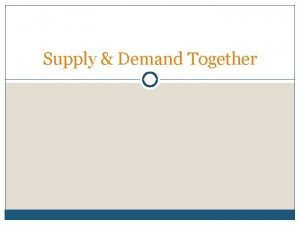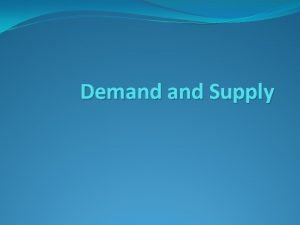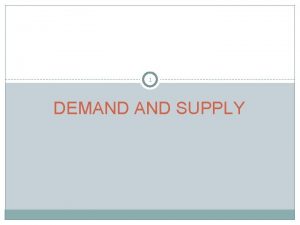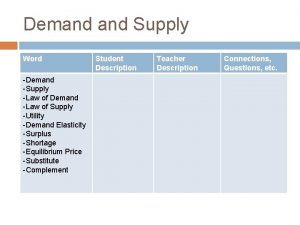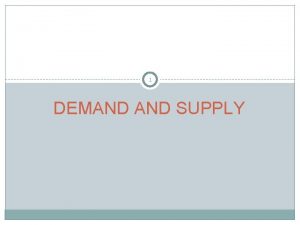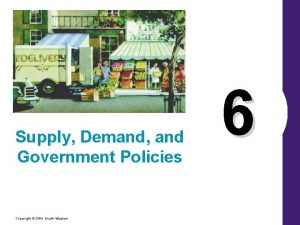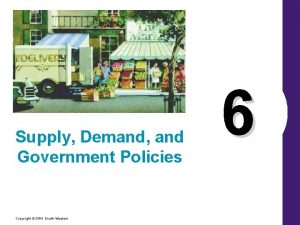Supply Demand and Government Policies Copyright 2006 Thomson














- Slides: 14

Supply, Demand, and Government Policies Copyright © 2006 Thomson Learning 6

Figure 1 A Market with a Price Ceiling (a) A Price Ceiling That Is Not Binding Price of Ice-Cream Cone Supply € 4 Price ceiling 3 Equilibrium price Demand 0 100 Equilibrium quantity Quantity of Ice-Cream Cones

Figure 1 A Market with a Price Ceiling (b) A Price Ceiling That Is Binding Price of Ice-Cream Cone Supply Equilibrium price € 3 2 Price ceiling Shortage Demand 0 75 125 Quantity supplied Quantity demanded Quantity of Ice-Cream Cones Copyright© 2003 Southwestern/Thomson Learning

Figure 2 Rent Control in the Short Run and in the Long Run (a) Rent Control in the Short Run (supply and demand are inelastic) Rental Price of Apartment Supply Controlled rent Shortage Demand 0 Quantity of Apartments Copyright© 2003 Southwestern/Thomson Learning

Figure 2 Rent Control in the Short Run and in the Long Run (b) Rent Control in the Long Run (supply and demand are elastic) Rental Price of Apartment Supply Controlled rent Shortage 0 Demand Quantity of Apartments Copyright© 2003 Southwestern/Thomson Learning

Figure 3 A Market with a Price Floor (a) A Price Floor That Is Not Binding Price of Ice-Cream Cone Supply Equilibrium price € 3 Price floor 2 Demand 0 100 Equilibrium quantity Quantity of Ice-Cream Cones Copyright© 2003 Southwestern/Thomson Learning

Figure 3 A Market with a Price Floor (b) A Price Floor That Is Binding Price of Ice-Cream Cone Supply Surplus € 4 Price floor 3 Equilibrium price Demand 0 Quantity of Quantity Ice-Cream Cones demanded supplied 80 120 Copyright© 2003 Southwestern/Thomson Learning

Figure 4 How the Minimum Wage Affects the Labour Market Wage labour Supply Equilibrium wage labour demand 0 Equilibrium employment Quantity of labour Copyright© 2003 Southwestern/Thomson Learning

Figure 4 How the Minimum Wage Affects the Labour Market Wage labour surplus (unemployment) labour Supply Minimum wage labour demand 0 Quantity demanded Quantity supplied Quantity of labour Copyright© 2003 Southwestern/Thomson Learning

Figure 5 A Tax on Buyers Price of Ice-Cream Price Cone buyers pay € 3. 30 Price 3. 00 2. 80 without tax Price sellers receive Supply, S 1 Equilibrium without tax Tax (€ 0. 50) A tax on buyers shifts the demand curve downward by the amount of the tax (€ 0. 50). Equilibrium with tax D 1 D 2 0 90 100 Quantity of Ice-Cream Cones Copyright© 2003 Southwestern/Thomson Learning

Figure 6 A Tax on Sellers Price of Ice-Cream Price Cone buyers pay € 3. 30 3. 00 Price 2. 80 without tax S 2 Equilibrium with tax S 1 Tax (€ 0. 50) A tax on sellers shifts the supply curve upward by the amount of the tax (€ 0. 50). Equilibrium without tax Price sellers receive Demand, D 1 0 90 100 Quantity of Ice-Cream Cones Copyright© 2003 Southwestern/Thomson Learning

Figure 7 A Payroll Tax Wage labour supply Wage firms pay Tax wedge Wage without tax Wage workers receive labour demand 0 Quantity of labour Copyright© 2003 Southwestern/Thomson Learning

Figure 8 How the Burden of a Tax Is Divided (a) Elastic Supply, Inelastic Demand Price 1. When supply is more elastic than demand. . . Price buyers pay Supply Tax 2. . the incidence of the tax falls more heavily on consumers. . . Price without tax Price sellers receive 3. . than on producers. 0 Demand Quantity Copyright© 2003 Southwestern/Thomson Learning

Figure 8 How the Burden of a Tax Is Divided (b) Inelastic Supply, Elastic Demand Price 1. When demand is more elastic than supply. . . Price buyers pay Supply Price without tax 3. . than on consumers. Tax Price sellers receive 0 2. . the incidence of the tax falls more heavily on producers. . . Demand Quantity Copyright© 2003 Southwestern/Thomson Learning
 Chapter 6 supply demand and government policies
Chapter 6 supply demand and government policies Module 5 supply and demand introduction and demand
Module 5 supply and demand introduction and demand Matching supply and demand in supply chain
Matching supply and demand in supply chain Copyright 2006
Copyright 2006 Copyright 2006
Copyright 2006 Senswex
Senswex Demand side policies
Demand side policies Demand side policies
Demand side policies Interventionist supply side policies
Interventionist supply side policies Interventionist supply side policies
Interventionist supply side policies Measures to correct deficient demand
Measures to correct deficient demand Dependant demand
Dependant demand Grapikong paglalarawan ng relasyon ng presyo at demand.
Grapikong paglalarawan ng relasyon ng presyo at demand. Demand forecasting methods in managerial economics
Demand forecasting methods in managerial economics Paradox of value
Paradox of value





